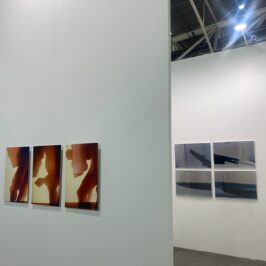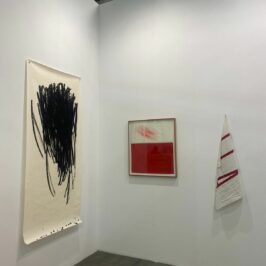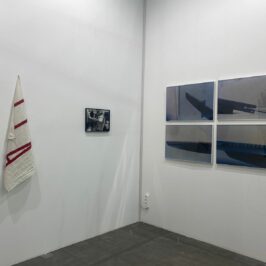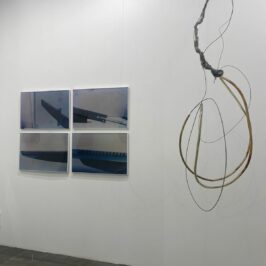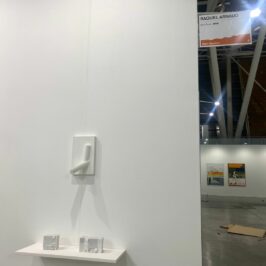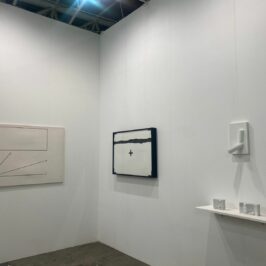artissima 2022
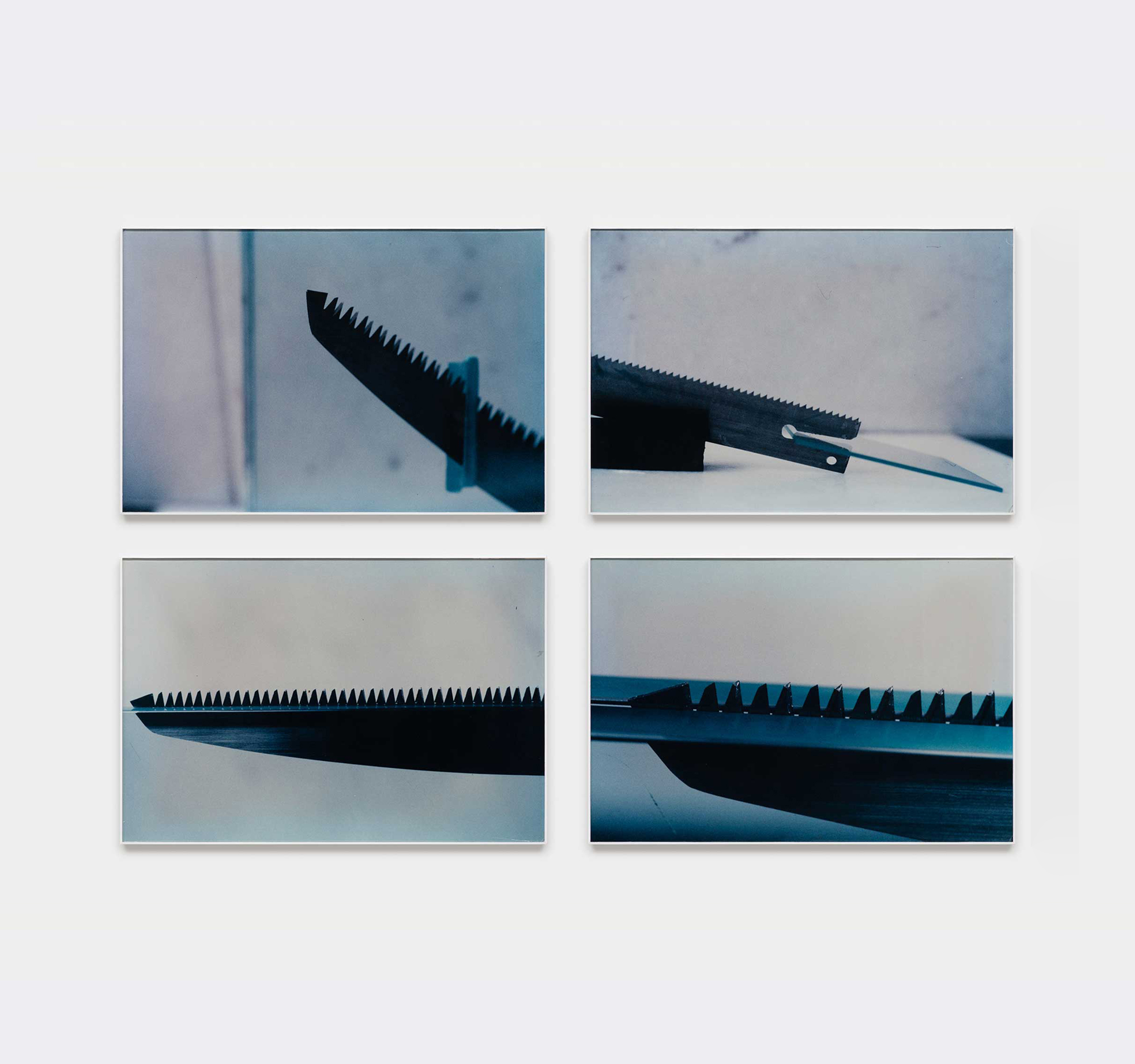
Pioneira no mercado de arte contemporânea no Brasil, a Galeria Raquel Arnaud construiu ao longo de sua trajetória uma forte abordagem institucional, pontuada por parcerias de longo prazo com seus artistas. Para a primeira participação na feira Artissima, a galeria mostra um recorte de sua longa trajetória através de seis artistas. Cada obra selecionada foi pensada para apresentar ao público a poética de cada artista e para que os diversos assuntos e materiais se cruzem e dialoguem entre si.
Anna Maria Maiolino (1942) deu início a sua carreira artística na década de 1960, começando pela experimentação com xilogravura e pintura, influenciada pela estética dos cordéis, combinando seu estilo gráfico a temas sociais e políticos que abrangem o movimento da Nova Figuração com a alusão antropofágica. Suas obras investigam a materialidade do papel e os limites da espacialidade com elementos como cortes, dobras e linhas que exploram a existência sensível do espaço, abordando cenas aparentemente prosaicas, mas imbuídas de conflito em decorrência da intensidade de incisões na matriz de madeira ou da crueza das composições.
A produção de Carlos Zilio (1944) passou por algumas das principais correntes da segunda metade do século 20, como a Nova Figuração Brasileira, aliando a preocupação com a ordem e a geometria a um discurso crítico vigente naqueles anos, entre 1960 e 1970. O artista produziu fotografias de teor quase performático, como a crítica irônica de personagens da sociedade brasileira. Aos poucos, Zilio eliminou os elementos narrativos de sua pintura, constituindo uma ação pictórica literal que estabelece um vocabulário pessoal entre a abstração e os elementos de composição eminentemente pictóricos.
Sergio Camargo (1930), considerado um dos mais originais artistas brasileiros ligados à vertente construtiva, destaca-se por explorar os limites da forma ao realizar cortes audaciosos nos materiais, em um procedimento por ele denominado “geometria empírica”. Em meados dos anos 1960, o artista começou a experimentar o mármore de Carrara. Entre 1961 e 1973, trabalhou em seu ateliê de Malakoff, em Paris, e junto ao ateliê Soldani, em Massa Carrara, na Itália, onde executava suas esculturas. Participou da Bienal de Veneza (1966 e 1982) e da Documenta (1968). Camargo faleceu em 1990.
Iole de Freitas (1945) iniciou sua carreira na década de 1970, participando de um grupo de artistas em Milão, Itália, ligado à Body Art, utilizando principalmente a fotografia e os filmes em Super-8 para elaborar obras que tratam da fragmentação da imagem corporal. A partir da década de 1980, seu trabalho se voltou para a escultura, utilizando diversos materiais e sempre mantendo como interesses primordiais o corpo, o espaço e o movimento. Iole trabalha com a galeria desde 1978. Participou da Documenta de 2007.
Waltercio Caldas (1946) iniciou sua produção na década de 1960. As suas esculturas, objetos, desenhos e instalações apresentam a combinação de diferentes materiais, muitos deles não convencionais. Seu trabalho, além de ser marcado por formas minimalistas, faz uso do humor e da ironia, de modo a desmontar as certezas dos espectadores ao colocar em dúvida sua percepção visual. Sua obra integra coleções de instituições como Centre Pompidou (França), Museum of Modern Art (MoMA, EUA), Instituto Inhotim, além de muitas outras. Caldas trabalha com a galeria desde 1982. Participou da Bienal de Veneza (1997 e 2001) e da Documenta (1992).
Carla Chaim (1983) representa uma nova geração de artistas brasileiros. Seu trabalho é desenvolvido através de desenhos, pinturas, fotografias, vídeos e instalações. A ideia do desenho, como um vestígio da presença da artista e de sua ação, é evidente em sua produção, marcada por movimentos orgânicos e gestos repetitivos. Em 2016, Carla foi selecionada para o Future Generation Art Prize, por meio do qual apresentou suas obras no Pinchuk Art Center, Kiev, Ucrânia, e em Veneza, na Itália, em um evento paralelo durante a Bienal de Veneza, em 2017.
Este projeto evidencia um diálogo entre gerações através da obra desses cinco artistas e reforça a coerência do programa da galeria, construído ao longo dos quase cinquenta anos de existência, unindo passado, presente e futuro.
_____________
A pioneer in the contemporary art market in Brazil, Galeria Raquel Arnaud has built a strong institutional approach throughout its trajectory, punctuated by long-term partnerships with its artists. For its first participation in the Artissima fair, the gallery shows highlights of its long trajectory through six artists. Each selected work was designed to introduce the public to each artist’s poetics, and they were also chosen in a way that the various subjects and materials intersect and dialogue with one another.
Anna Maria Maiolino (1942) began her artistic career in the 1960s, initially experimenting with woodcuts and painting. Influenced by the aesthetics found in “cordéis”, she combined her graphic style with social and political themes that encompass the New Figuration movement with anthropophagic allusion. Her works investigate the materiality of paper and the limits of spatiality with elements such as cuts, folds, and lines that explore the sensitive existence of space. They also approach seemingly prosaic scenes, which are imbued however with conflict due to the intensity of incisions in the wood matrix or the compositions’ rawness.
The production of Carlos Zilio (1944) has passed through some of the main art movements of the second half of the 20th century, such as the New Brazilian Figuration, combining the concern with order and geometry with a critical discourse that prevailed between the 1960’s and 1970’s. The artist produced photographs in an almost performative tenor as an ironic criticism of Brazilian society’s characters. Gradually, Zilio eliminates the narrative elements of his painting – a literal pictorial action that establishes a personal vocabulary between abstraction and the eminently pictorial elements of composition.
Sergio Camargo, considered one of the most original Brazilian artists linked to the constructive style, stood out for exploring the limits of the form by making audacious cuts in materials, in a procedure he called “empirical geometry”. In the mid-1960s, the artist began to experiment with Carrara marble. Between 1961 and 1973, he worked at his Malakoff studio in Paris and at the Soldani studio in Massa Carrara, Italy, where he executed his sculptures. He participated in the Venice Biennale (1966 and 1982) and in the Documenta (1968). Camargo passed away in 1990.
Iole began her career in the 1970s, participating in a group of artists in Milan, Italy, linked to body art, working primarily with photography and films on Super 8 to elaborate works that deal with the fragmentation of body image. From the eighties on, her works have turned to sculptures using a variety of materials, always keeping the primordial interests in the body, the space and the movement. Iole has been working with the gallery since 1978. She participated in the 2007’s edition of the Documenta.
Waltercio Caldas began his production in the 1960s. His sculptures, objects, drawings, and installations present a combination of different materials, a lot of which are non-conventional. His work, besides being marked by minimalist forms, makes use of humor and irony in order to dismantle the viewers’ certainties by putting their visual perception in doubt. His works are integrated into collections of institutions such as the Centre Pompidou (France), the Museum of Modern Art – MoMA (USA), the Inhotim Institute and many others. Caldas has been working with the gallery since 1982. He participated in the 47th and 52nd editions of the Venice Biennale and in the Documenta 9.
Carla Chaim represents a new generation of Brazilian artists. Her work is developed through drawings, paintings, photographs, videos and installations. The idea of drawings, as a trace of the artist’s presence and action, is evident in her production, which is marked by organic movements and repetitive gestures. In 2016, Carla was selected for the Future Generation Art Prize, and in 2017 she presented her works at the Pinchuk Art Center, Kyiv, Ukraine and in Venice, Italy, in a collateral event during the Venice Biennale.
This project establishes a dialogue between generations through the work of these 6 artists and reinforces the coherence of the gallery’s program, which has been built over almost 50 years of existence, uniting past, present and future.


